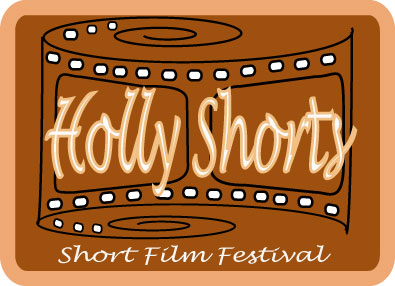The short film is a medium tangential to the customary clockwork of the film industry. For decades now, the format in which it was born has been relegated to students, experimental artists and grunt-level industryites out to prove they can direct. The entries I’ve seen at short film fests usually break down into two opposite groups: a handful of bold, narrative science-fair projects versus a broad swath of films that look, sound and feel exactly like anything you’d pay twelve dollars to see at the Arclight and bitch about on the drive home. Except shorter.
As every media company in the world figures out how to make money with Internet video though, the short film is suddenly back as belle of the ball. Online distributors are hungry for content, but by all indications have no faith in the audience’s ability to watch anything on a computer that’s longer than seven minutes—or that is remotely dramatic. It’s sort of a gold rush back to the industry’s roots; not since the first experiments in film a hundred years ago has short content garnered so much attention or appeared so lucrative. This also makes short film festivals ground zero for discussion and dissection of the format as an art and a re-envisioned business.
A lot of us who write for SM are filmmakers ourselves, something I note here as it’s the perspective from which I speak. I arrived at the opening night event for the third annual HollyShorts Film Festival a little late. I own one suit, and it lives in my car with most of my other laundry. Digging for the tie while negotiating Southbound 101 traffic was problematic but eventually effective. Thirty seconds in line outside Nacional on Wilcox was all it took to remind me why I hate Hollywood and why just about everything that has to do with moviemaking actually takes place as far away from that seethy boulevard as possible. I preferred to make conversation with a homeless man who offered to be my assistant in exchange for liquor rather than the kid in line behind me who insisted his film was too avant garde to be accepted at this festival. Fortunately, the line moved swiftly.
Once inside, and through to the end of the festival, the whole event was executed flawlessly much to the credit of its ever-present, friendly and knowledgeable organizers. The program also achieved an impressive balance of running times, genres, tones, narrative styles, budgets and production values--though none low enough to jeopardize the HollyShorts stamp of quality that seemed to pronounce itself as the screenings progressed.
The weekend-long festival opened with Euthanasia directed by Entourage’s Adrian Grenier. It was kind of a mediocre crowd-pleaser about two high school girls who accidentally run over their cat. He’s a celebrity…guess you gotta have one of those at your opening night. It was all in focus.
Both the Saturday and Sunday sessions were populated with gems. Julien West’s Small Jeans has many groan-inspiring short film staples: a predilection to voiceover, montage, non-linear structure and the abrupt onset of fatal disease. But West’s is the perfect example of a film that gets all these right--absolutely nails them. Main character Zoe’s dry but vaguely whimsical philosophical musings narrate her quest to offload a pair of bought-but-never-worn, too-small jeans on friends, co-workers and a neighborhood heroine whore. The film has an expertly-honed marriage of humor and drama, better-than-Hollywood cinematography, production design, performance and a running time that leaves you wanting more.
Joel Davenport’s The Drill, a ground-level portrait of duck-n-cover kids in the 1950s, achieves praise-worthy performances from its elementary school cast. The film becomes an understated but taught exercise in tension when the air-raid drill runs long, and the students begin to suspect it's the real thing. Other well-received entries included Timothy Cahill’s The Oates’ Valor (HollyShorts Best Drama Winner), Tony West’s Dartsville (Best Cinematography) and John Thompson’s Songbird (Best Short Film).
The festival was also host to a slew of animated entries. Michael Attardi’s Once Upon a Christmas Village features the voices of Jim Belushi and Tim Curry as well as several sequences animated via motion capture technology. Michelle Meeker’s When I Grow Up is a beautiful collage of short animations by different artists from all over the world. Each was given an audio excerpt from an interview with a child and complete freedom to form their own moving images. The show-stealer, however, was Adam Walker’s Sam and Piccolo. I can only describe it as a Pixar film directed by Hayo Miazaki. It had a grasp of animation that only the Japanese have these days--that they can be dark, not in a cackling-wicked-witch sort of way, but in a questioning-your-own-capacity-for-greed kind of way. It starts out whimsical but ends biblical.
There were also parties, food and alcohol, and though these are all superfluous to the art, organizers were thoughtful and savvy in their selection of location and menu. The screenings and panels ran at Cinespace on Hollywood - a bar/club/restaurant with a main screening room and video feeds snaking into every other corner of the establishment. The main room was mostly booths and tables on successively elevated flooring stretching away from the screen. It was a great setup, as servers could hit their tables and not really distract from the films. As previously mentioned, Nacional hosted the opening night, with the closing event unfolding at Vice, and DJed by hip-hop legend Biz Markie. It occurred to me at some point that I should have somehow smuggled out some of the discounted alcohol my media badge afforded me to enlist my homeless assistant but ultimately decided that digging for a tie myself is the cost of not enabling destructive behavior. I’m sure I’ll see him next year, as Hollyshorts is a festival I hope to return to.
Wednesday, January 09, 2008
Subscribe to:
Post Comments (Atom)





No comments:
Post a Comment